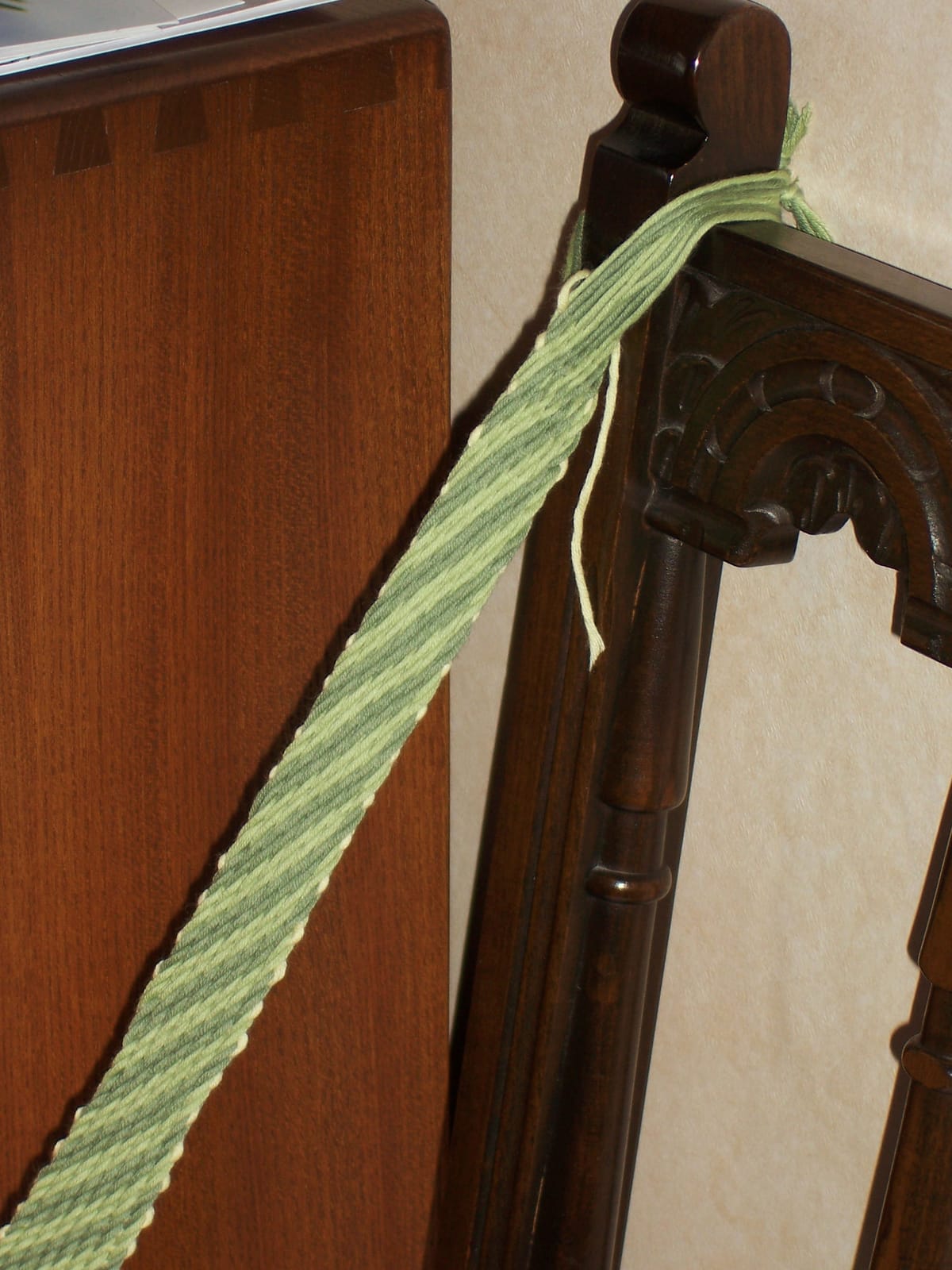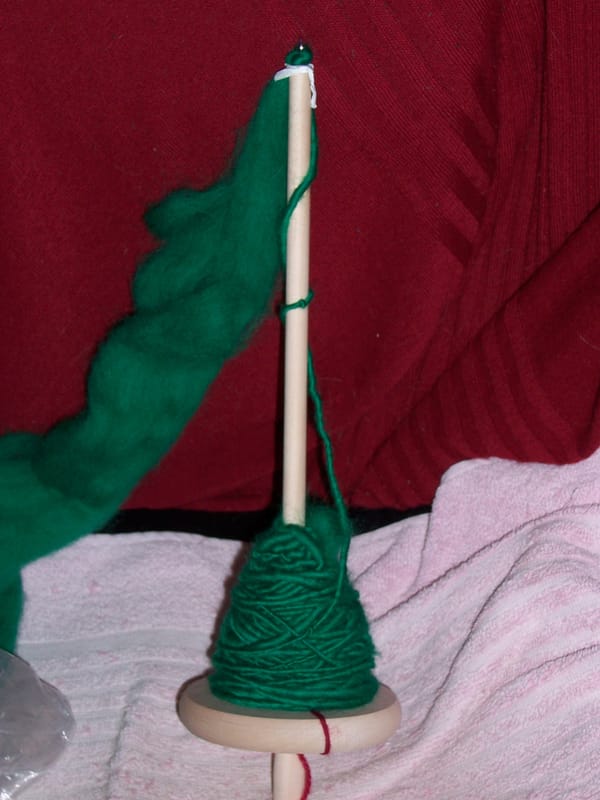Keep taking the tablets

I used to be in the SCA, which stands for the Society for Creative Anachronism. This was (and still is) a mediaeval re-enactment society, probably best known for the fighting. People get themselves up in mediaeval armour, with a good deal of padding, and engage in mock sword fights with what basically amount to big sticks. Very fancy big sticks, but still, big sticks, because nobody wants to get really hurt (though there are apparently still a lot of bruises despite all the padding). And if you're good enough at doing that, you get to be the local king or queen, which is probably fun, except that it does work out quite expensive because you have to travel around a lot. After all, what would a tournament be without the appropriate royalty?
I never did any of that side of things. I really wasn't interested. Instead, I was in it for the crafts. My SCA persona was twelfth-century, so I learnt to make a bliaut (which, incidentally, was pretty much zero-waste long before it became fashionable to talk about zero-waste sewing; cloth was very expensive in those days, so you made sure you used all of it). I did a bit of mediaeval-style embroidery. I think there were a few other things I dabbled in, too; but the thing that really grabbed me was tablet weaving.
Tablet weaving is ingenious, great fun, and - as you see here - makes a really good strong braid. You can use it for things like belts, lute straps (oh, all right, then, or guitar straps, but you will probably not be surprised to learn that I have a lute but not a guitar), braces, luggage straps, bag handles, or even name labels. Yes, you can weave letters (or anything else you like) into the design; the one shown here is very simple, but tablet weaving can be just as expressive as, say, cross stitch.
The one thing you can't see from the picture is why it's called tablet weaving. The answer to that is simple. Rather than using a regular loom, you set up the warp threads on small regular (usually square, but it's possible to use other shapes such as hexagons) wooden tablets with a hole punched in each corner. I say "wooden", but it is possible to make your own tablets from squares of reasonably stout card; they won't last as long as wooden ones, but they are good if you just want to try it out. For a simple design like the one above, all the tablets will be set up in the same way; in this case, a darker thread goes through each of the top two holes and a lighter one through each of the bottom two (or vice versa; it comes to the same thing). You then tie all the threads together on one side of your nest of tablets and hook them over something firm, like the conveniently shaped chair finial shown here. (This isn't my chair. I can't afford anything so fancy. It's my mother's.) Then you hold all the tablets together with the correct threads facing upwards and the faces of the tablets sideways on to you. That gives you two sets of warp threads with a gap between them, through which you pass the weft thread. As you can see from the picture, tablet weaving is "warp faced" - in other words, it is the warp threads that make the pattern; the weft thread is almost invisible, except that you can see the end of it at the top and small portions of it at the edges where it turns.
And then - here's the ingenious bit - you give your tablets a quarter turn. In the case of this pattern, it doesn't matter which way you turn them as long as you keep turning in the same direction. However, doing a few turns one way and then a few the other creates chevrons, because the stripes reverse direction, and much more complex effects can be created from turning the tablets individually in different ways. Pass the weft thread through the gap, turn, repeat.
It's a great technique, but there are a few little wrinkles. For one thing, the warp threads on your side of the tablets are inclined to get tangled due to the repeated twisting, especially if you are doing a pattern like the one shown where the tablets always turn in the same direction. So, every now and then, you have to stop and untangle them. (With chevrons, this mostly sorts itself out.) There is also the problem that to do it as shown here, you need to be able to stand for a fairly significant period, which I no longer can. There are ways round this, however. You can get dedicated tablet-weaving looms, which aren't really looms as such, but provide a way to anchor your warp threads firmly while you are working; these also make the work portable. Since I couldn't afford one of these, I did what I usually do and improvised something. I can't remember exactly what it was like and no photo of it survives, but I do recall I started with a white plastic chopping board with a handle. I probably tied the warp threads to the handle and wrapped the work around the board somehow, though there was definitely more to it than that.
I'm not quite sure how I'd go about it now, if I were to do it again (which I'd like to; I have a book on it somewhere, and I would like to try some of the more complex designs). The problem is where and how I'd anchor the warp threads. Tying them to my Zimmer frame wouldn't do much good, as it's aluminium, so the moment I started weaving I'd pull it over. Perhaps if I hung a sufficiently large weight over it?




